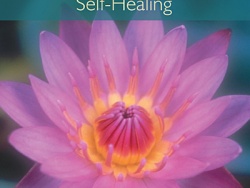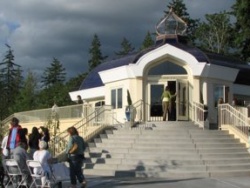Ananda monasteries are where monks of Ananda Sangha live and serve together. Paramhansa Yogananda taught a far more inward and positive form of renunciation than was taught traditionally. True freedom comes from ego-transcendence, gained by giving everything as an offering to God — as compared to the older monastic way of only outwardly renouncing. Swami Kriyananda called this approach “bliss-affirming” as opposed to a life-negating approach to renunciation.
Ananda has monasteries in the United States and in India. The U.S monastery is located at Ananda Village in California. The India monastery is in Chandigarh.
A monastery is a community of monks. Many sincere spiritual seekers have past lifetimes of being a hermit monk or nun, seeking God in solitude and privacy. The advantages of monasteries are several.
One is the spiritual support and satsang that a strong community of committed and sincere brahmacharis offers to the individual monk. The magnetism of daily group meditation with long-time meditators — along with the inspiration of younger and deeply devoted monks — is of extreme value for everyone. The inevitable dry spells on the spiritual path can be greatly shortened when there is daily inspiration and support of other monks.
Community also provides the training of long-time disciples of this path. It is easy for seekers to make up their own image of what the spiritual path is about, based on what Yogananda called “whims and fancies.” The wisdom and experience of senior disciples is an essential aspect of monastic community.
Community also gives one many opportunities to practice ego-renunciation. Swamiji’s “Techniques of Ego-Transcendence” in Sadhu, Beware! almost exclusively refer to practices and lessons in relation to other people in a community. These lessons can be easy and harmonious, or very challenging, depending on the individual’s practice of meditation and ego-renunication. Either way, it is a very fast route to ego-renunciation.















